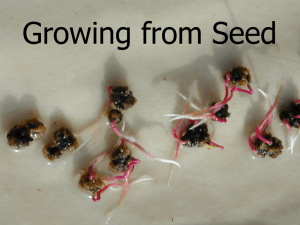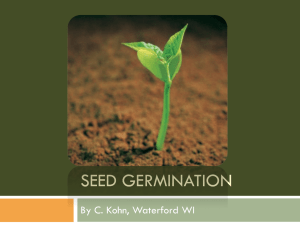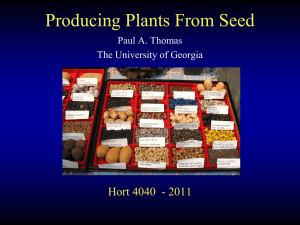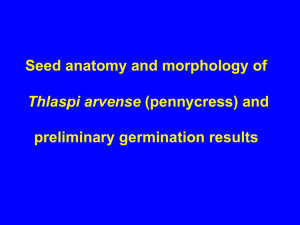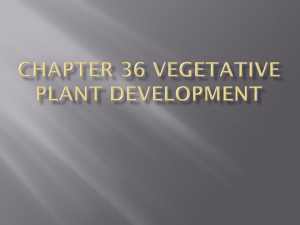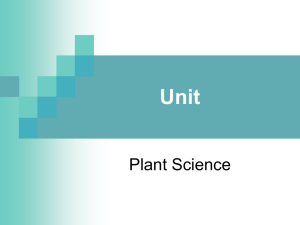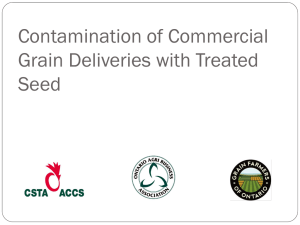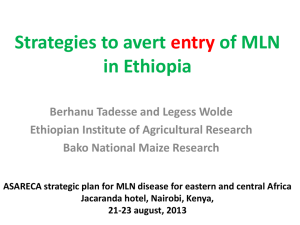Tomato Plant Growing Guide: Seed Germination, Diseases & Pests
advertisement
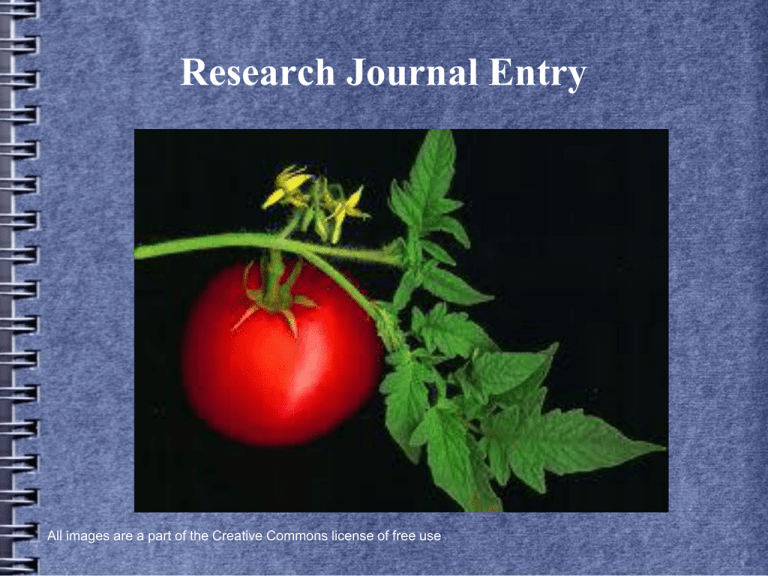
Research Journal Entry All images are a part of the Creative Commons license of free use Growing from Seed There are two different methods of growing from a seed. Apply directly to ground: Some will grow some might not grow. or Indoor Germination Can physically see root cap for successful plant. Apply Directly in Ground Assigned plot Find center of plot Use ruler or measuring tape to find the center Measure length and divide by two Measure width and divide by two This will give you the center of the plot. Make a hole in soil about one inch in depth Put seed in hole Bury seed Slowly add water until soil is moist Indoor Germination Cheating Mother Nature One seed germination Moist paper towel NOT dripping wet Apply seed to paper towel Fold seed in paper towel carefully Put moist paper towel and seed into a plastic zip lock bag Zip ¾ of the zip-lock bag and exhale into the open end to blow up bag Zip as bag fills with air Adding Carbon dioxide (food) Indoor Germination All images are a part of the Creative Commons license of free use Indoor Germination Put Plastic bag in a warm dark place. Check bag in three days and very carefully unfold paper towel. If seed does not look like the root cap has emerged, refold paper towel, put back in plastic bag, inflate again with exhaled air, and put back in warm dark place. Check again in two days. If root cap emerged.... Indoor Germination Take out and plant in center of plot with root cap down in the one inch hole. All images are a part of the Creative Commons license of free use Tomato Plant Parts Bottom of Plant to Top As the seed develops the root cap (Protective cap of root tip) is the first to emerge. Followed by the root tip (Pushes root cap vertically down through the soil). If germinating indoors you must be extremely careful of the above two parts, if they break, germinate again, you just killed the plant! Root hairs (hair-like out growth above root tip) absorb water, nutrients, and salt from soil. Tomato Parts continued Diagram at end of Plant Parts Root hairs - two kinds: Lateral root: grows horizontally and diagonally Primary root: grows out from root cap and root tip Ground tissue then emerges from soil. This is known to many people as the stem. As the tomato plant grows vascular tissue is formed inside the ground tissue that transports water, nutrients, and sap: two large veins running up and down the plant. Plant Parts Continued Node: Part of stem normally produces leaf growth Inter-node: plant part between two nodes Lateral bud: Producers of flowers Epidermis: Outer protective layer of the plant. Shoot tip (Sucker): takes energy away from the production of fruit of plant. Produces more leaves makes plant more dense increasing disease and insect issues. Removing suckers promotes more vigorous energy and larger production of fruit! Plant Parts Continued Flower: contains reproductive organs to produce fruit Leaf: lateral outgrowth of a stem Common Diseases of Tomato Plants Remove infected leaves by cutting with scissors than spraying plant with 50% skim milk and water, spreads by wind and as it advances leaves turn yellow. All images are a part of the Creative Commons license of free use Diseases Of Tomato Plants Infection will eventually kill plant, hot dry climates will kill infection or propagate top of plant. All images are a part of the Creative Commons license of free use Common Insects and Animals Mutualism Bees and wasps Humming birds Butterflies Assassin beetle Predation Deer Rabbits Raccoon's Frogs Common Insects and animals Parasitism Scale- white skeleton looking creature Aphids- tiny green/brown insects found under leaves Leaf-footed- orange body with black legs (aggressive) Horn worm-Huge green caterpillar viscous appetite Whitefly- hard to identify as small as aphids Commensalism Black ant – carries aphids than eat aphids for sugar Braconid wasp – lays eggs in Horn worm and larvae eat horn worm from inside until death.

